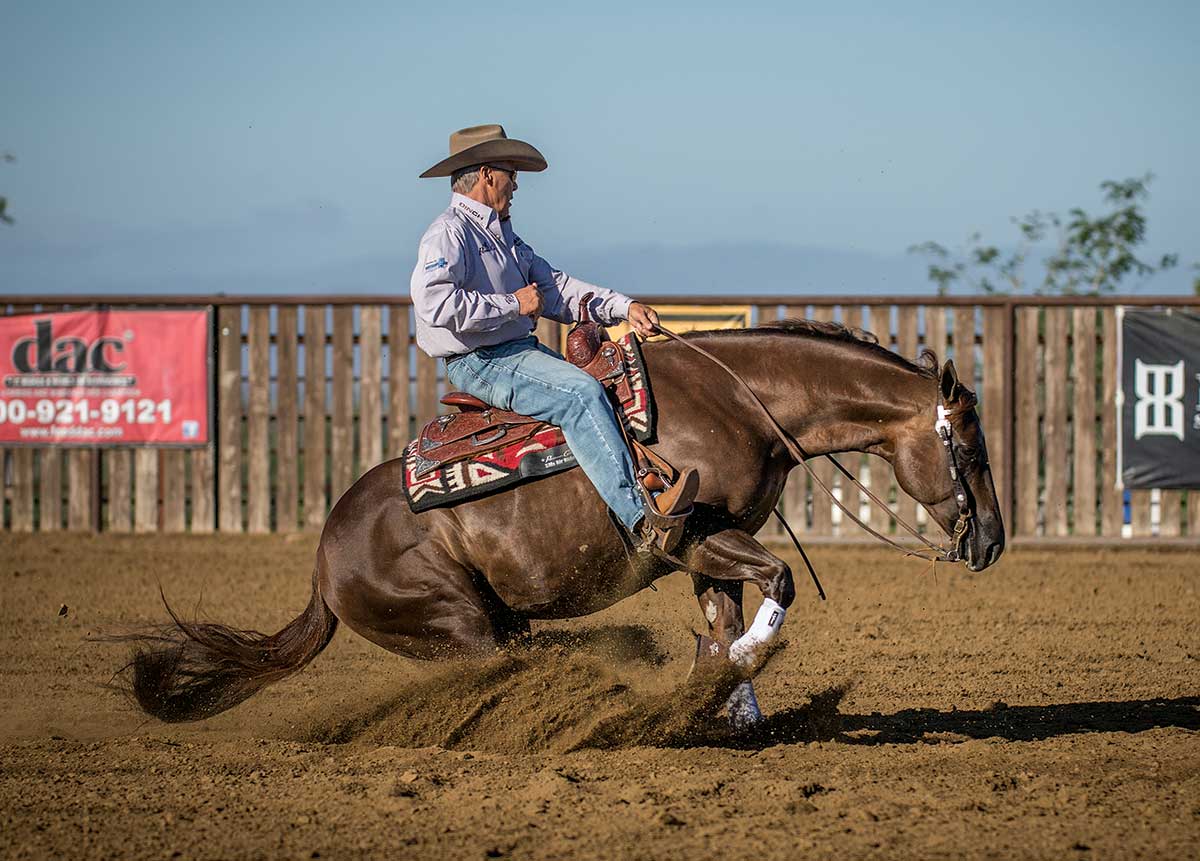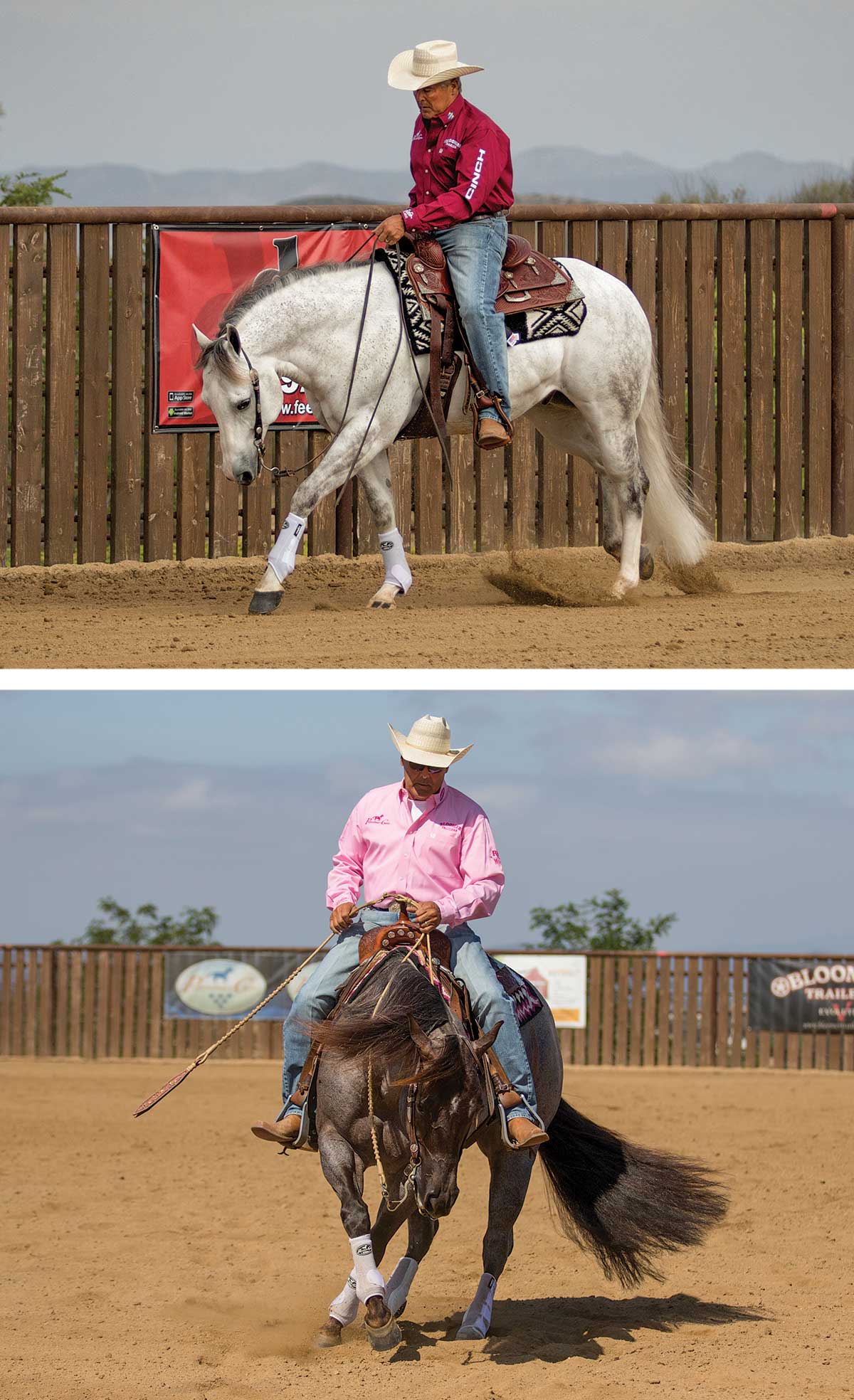
Your performance horse knows his job. Sure, he might require some tuning and guidance, but he probably has a solid grasp on the fundamentals of what’s required for his event. When you get in his way—pulling, thinking you can out-muscle him, trying to use force—he can’t do his job and learns to pull, push, and lean against you.
[READ: Rate & Speed Control with Bob Avila]
No matter your event—reining, Western pleasure, all-around, or cow horse—the more you stay out of your horse’s way, the better off you’ll be and the more likely you are to achieve your goals. I’ll identify four maneuvers where I commonly see amateur riders build resistance in their horses. Read on to see if you identify with any of these situations, then learn how to get out of your horse’s way.
Lead Changes
Here’s the situation: You’re loping a circle on the right lead. Your horse is leaning to the left, so you pull harder to the right. He matches your pull, leaning left even more. You’re not guiding your horse; you’re trying to muscle him so he gives to your will. When you ask for the lead change, his body position means his left front foot will hit the ground first, and he’ll dive into the lead change and to the left. He won’t be balanced and smooth—what the judges are looking for—when he changes leads.
Instead, work on straightness and guide. Turn to lateral work to straighten your horse’s shoulders and improve his steering. Then when you change leads, approach with straightness and balance, move your horse’s rib cage, and cue for the lead change—and stay out of his way so he can execute it correctly.
Turns
The harder you pull, the heavier he gets. I’ve had customers who think they can literally out-muscle their horse in this situation. The short answer is no, you can’t out-muscle a 1,000-pound horse. Whether it’s a set of spins for reining or a pivot for horsemanship, pulling harder isn’t the answer. It only makes your horse heavier on his front end and harder to turn.
Think about using all of your aids as well as how you use them. Start with a “please” cue—the lightest request for the maneuver—from your hand. Then build from there, adding leg pressure to urge his shoulders to lift and move for the turn.
Back-Up
The fastest way to a slow back-up? Pulling, pulling, and pulling some more. If you drag on your horse’s face to cue for a back, he’ll brace against the bit and get heavy on his front end, as if his feet are stuck in cement.
Think before you cue for a back. Start with a light hand cue by picking up your reins (and his shoulders), moving your hand backward toward your buckle, and lightly bumping his sides with your feet. Tell him which way to go, ask him to lighten his feet, then let him do what he already knows how to do.
[READ: Keeping Older Performance Horses Sound with Bob Avila]

Rundowns
The rundown sets the stage for the sliding stop in reining patterns, but the advice about letting your horse do his job applies to traveling any straight-line approach, whether it’s on the way to a set of lope-over poles in a trail class or part of a ranch riding pattern. Get your horse straight, and let him stay straight by getting out of his way.
Say you’re loping on the right lead for a rundown. Your horse starts to lean left, so you try to muscle him to the right to stay straight. When you get to your stopping point, all of your pulling will get in the way of his ability to stop. When he does stop, your horse’s left front leg—the direction he was pulling you—will hit the ground first instead of his hindquarters. He can’t go to the ground with his rear end because your interference threw off his balance.
Think about running free and straight. If your horse tends to lean, practice at home. When he wants to lean left, send him off his path by making a hard right turn. Use lateral work to straighten his shoulders and balance his body. Then when you run to a stop, stay out of his way and let him show you what he knows.
[READ: Say ‘NO’ To Negativity with Bob Avila]
Forget About Force
Performance horses are trained to do their job; you can’t force them. You’re there to be the driver—to tell him where to go and when to do what maneuver. The more you can stay out of his way, the better he can perform.
Bob Avila, Temecula, California, is an AQHA world champion, three-time NRCHA Snaffle Bit Futurity winner, NRHA Futurity champ, and two-time World’s Greatest Horseman. He’s been named the AQHA Professional Horseman of the Year. Learn more at bobavila.net.






